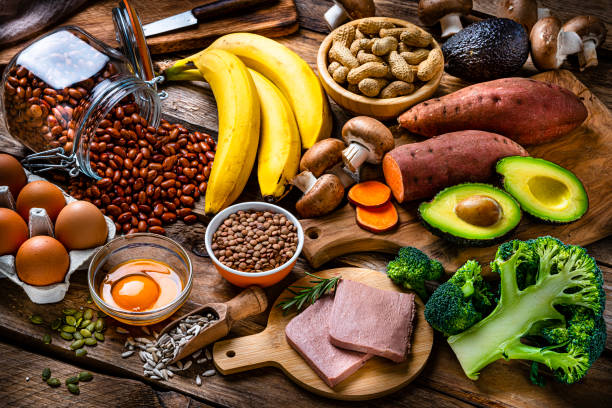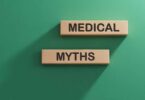In a world flooded with diet fads, detox plans, and conflicting nutritional advice, understanding what truly constitutes a healthy and balanced diet can feel overwhelming. But here’s the truth: you don’t need to follow extreme regimens or deprive yourself to achieve optimal health.
This guide will walk you through everything you need to know about creating a diet that not only fuels your body but also fits seamlessly into your lifestyle. Let’s break down the science, bust the myths, and uncover a practical path to vibrant health.
What Is a Healthy and Balanced Diet?
A healthy and balanced diet provides all the essential nutrients your body needs—proteins, carbohydrates, fats, vitamins, and minerals—in the right proportions. It’s about variety, moderation, and consistency.
Core Principles of a Balanced Diet
- Variety: No single food can offer all the nutrients your body needs.
- Moderation: Portion control helps maintain a healthy weight.
- Nutrient Density: Choose foods rich in nutrients rather than empty calories.
- Balance: Mix macronutrients (carbs, proteins, fats) properly across meals.
When these principles are followed consistently, they promote energy, immunity, mental clarity, and long-term health.
The Essential Nutrients Your Body Needs
To eat healthily, you need to understand what your body needs and why.
Carbohydrates – Your Body’s Primary Fuel
Carbohydrates are often misunderstood but are crucial for energy.
Healthy sources include:
- Whole grains (brown rice, oats, quinoa)
- Vegetables
- Fruits
- Legumes
Avoid or limit:
- Refined sugars
- White bread
- Sugary drinks
Proteins – The Building Blocks of Life
Proteins help build and repair tissues, and are essential for muscle and hormone health.
Best sources:
- Lean meats (chicken, turkey)
- Fish and seafood
- Eggs
- Lentils and beans
- Greek yogurt
- Tofu and tempeh
Fats – Not the Enemy
Healthy fats are vital for brain function, energy, and absorption of vitamins.
Healthy fats:
- Avocados
- Nuts and seeds
- Olive oil
- Fatty fish (salmon, sardines)
Limit:
- Trans fats (found in fried and packaged foods)
- Excess saturated fats
Vitamins and Minerals – The Micronutrient Magic
These support everything from bone health to immune function.
Get them from:
- Fruits and vegetables (all colors)
- Dairy or plant-based alternatives
- Whole grains
- Nuts and seeds
h3: Water – The Unsung Hero
Water supports every bodily function, from digestion to detoxification.
Hydration tips:
- Aim for 8–10 glasses a day
- Start your morning with water
- Replace sugary drinks with herbal tea or lemon water
How to Create a Balanced Plate
Use the “Healthy Plate Model” as your guide:
Half Your Plate: Vegetables and Fruits
- Aim for variety and color
- Include raw and cooked options
- Fresh or frozen—both are great
One Quarter: Lean Protein
- Think grilled chicken, fish, lentils, tofu
- Choose low-fat preparation methods
h3: One Quarter: Whole Grains or Starchy Vegetables
- Brown rice, quinoa, whole-wheat pasta
- Sweet potatoes, corn, peas
Add a Small Serving of Healthy Fats
- Olive oil drizzle
- Avocado slices
- A few nuts or seeds
Don’t Forget Fluids
- Water should be your primary drink
- Herbal teas or infused water add flavor
The Role of Meal Timing and Frequency
When you eat can be just as important as what you eat.
Benefits of Eating Regular Meals
- Stabilizes blood sugar levels
- Prevents overeating later
- Supports metabolism
A simple schedule:
- Breakfast: Within 1–2 hours of waking
- Lunch: Midday, balanced and filling
- Dinner: At least 2–3 hours before bedtime
- Snacks: If needed, choose healthy options like fruits, nuts, or yogurt
Common Diet Myths Debunked
Don’t let misinformation derail your health goals.
Carbs Make You Fat
Carbs aren’t the problem—refined carbs and overeating are. Choose whole carbs and control portions.
All Fats Are Bad
Your body needs fat to function. Just make sure you’re eating the right kind of fat.
Skipping Meals Helps Lose Weight
Skipping meals often leads to binge eating and nutrient deficiencies. It’s not a sustainable solution.
You Need Expensive Superfoods
While superfoods are great, common foods like spinach, oats, lentils, and eggs are just as beneficial.
How to Eat Healthy on a Budget
Eating well doesn’t have to be expensive.
Shop Smart
- Buy in bulk: Rice, beans, lentils
- Choose store-brand items
- Shop seasonal and local produce
Cook at Home
Home cooking saves money and lets you control ingredients.
Limit Waste
- Plan meals ahead
- Use leftovers creatively
- Freeze excess food
Special Diet Considerations
Plant-Based Diets
Rich in fiber, vitamins, and antioxidants. Make sure to get:
- B12 supplements
- Iron and protein from legumes, tofu, whole grains
Low-Carb or Keto Diets
Effective for some, but needs balance and should be monitored for long-term effects.
Gluten-Free Diets
Necessary for those with celiac disease or gluten sensitivity—others may not need to avoid gluten.
Intermittent Fasting
Can support weight loss and metabolism, but not suitable for everyone. Listen to your body.
Practical Tips to Stick to a Healthy Diet
Plan Your Meals
- Take time once a week to plan and prep
- It prevents impulsive eating
Read Food Labels
- Look out for hidden sugars, salt, and additives
- Shorter ingredient lists are usually better
Make Healthy Swaps
- Brown rice instead of white
- Greek yogurt instead of sour cream
- Air-popped popcorn instead of chips
Control Portions
- Use smaller plates
- Listen to your hunger cues
- Avoid eating while distracted
Healthy Diet for Different Age Groups
Your nutritional needs change with age.
For Children
- Focus on variety and colorful meals
- Include calcium, iron, and healthy fats
For Adults
- Balanced meals with whole foods
- Moderate salt, sugar, and alcohol intake
For Seniors
- Easy-to-digest foods
- Higher protein for muscle maintenance
- Vitamin D, calcium, and B12 supplementation
Emotional Eating and How to Handle It
Food should nourish, not numb emotions.
Recognize Triggers
Are you eating out of boredom, stress, or sadness?
Build Healthy Coping Mechanisms
- Go for a walk
- Call a friend
- Journal your feelings
Keep a Food Diary
Track your meals and moods to identify patterns.
Long-Term Benefits of a Balanced Diet
Consistently eating well leads to a ripple effect of health benefits.
Physical Health
- Healthy weight
- Improved digestion
- Stronger immune system
Mental Well-being
- Better mood and concentration
- Reduced risk of depression and anxiety
Longevity
- Reduced risk of chronic illnesses like heart disease, diabetes, and cancer
Sample 1-Day Balanced Meal Plan
Here’s what a full day of clean, balanced eating looks like:
Breakfast
- Oatmeal with berries and a spoon of peanut butter
- Green tea or lemon water
Snack
- Apple slices with almonds
Lunch
- Grilled chicken or chickpeas
- Quinoa salad with mixed vegetables
- Olive oil and lemon dressing
Snack
- Greek yogurt with a drizzle of honey
Dinner
- Baked salmon or tofu
- Steamed broccoli and sweet potato
- Herbal tea






